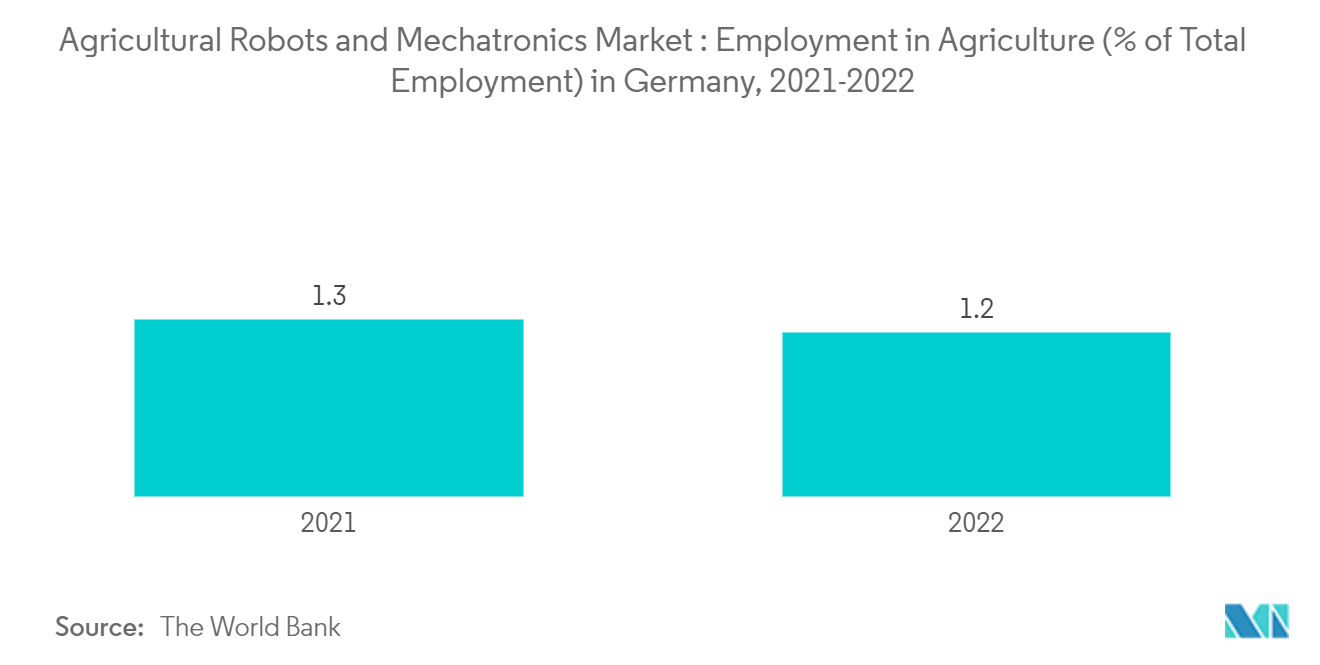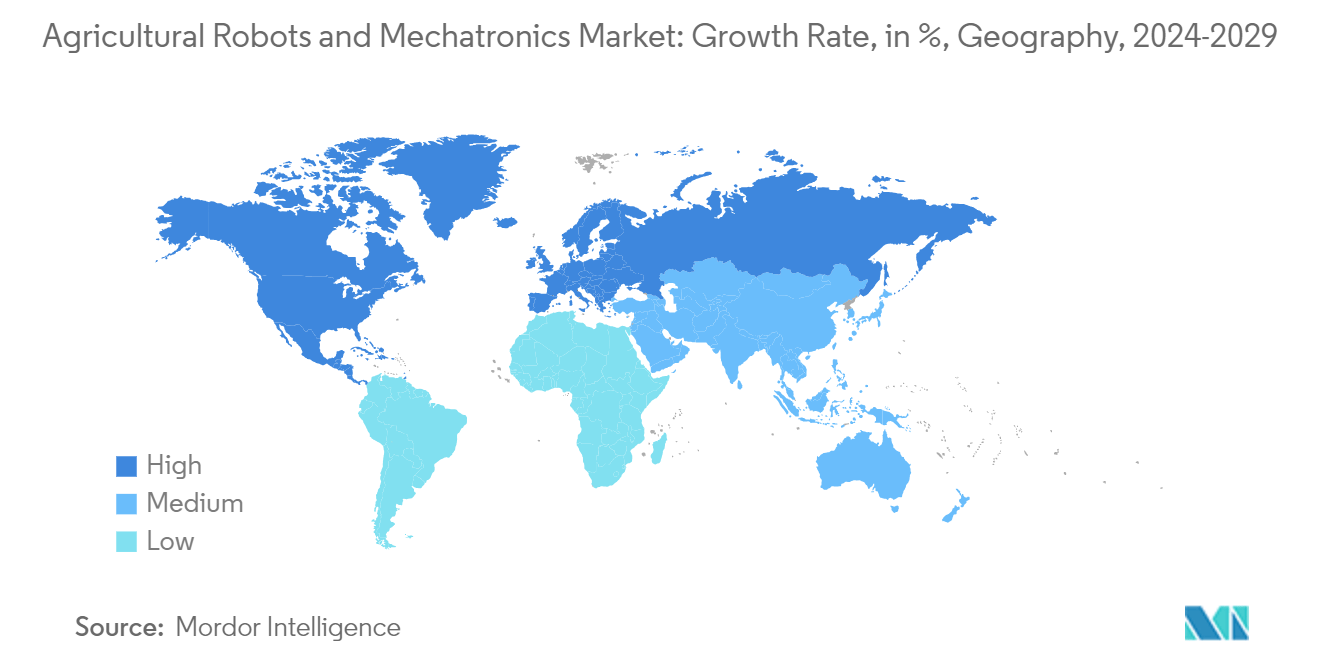Market Trends of Agricultural Robots And Mechatronics Industry
Shortage and Cost of Labor is Driving the Market
Globally, the shortage of farm labor is driving an increased demand for farming robots and mechatronics. This trend mirrors a global shift where factors like rising wages, and urban migration, are nudging farmers toward mechanization. Autonomous tractors and modern farm equipment empower farmers to boost productivity and cut down operational time. Given the unpredictable weather and mounting competition, farmers are increasingly relying on farming robots and mechatronics to achieve higher yields with reduced labor.
As rural populations dwindle and urban migration intensifies, consequently, labor in agriculture decreases in many countries of the world. For instance, as per the data released by the World Bank, employment in agriculture (% of total employment) in Germany was 1.3 in 2021 which decreased and reached 1.2 in 2022. To counter this, farmers are turning to farming robots and mechatronics, aiming to sustain or boost productivity while leaning less on human labor.
Furthermore, as the world pivots towards precision agriculture, leveraging data and technology to refine farming practices, there's a growing emphasis on technologically advanced robots. This evolution aligns with the world’s broader agricultural modernization efforts. Moreover, by embracing automation, farmers are not only addressing the challenges of rising costs and dwindling labor but are also ensuring the sustainability of their agricultural output.

North America Dominates the Global Market
North America has this position mostly as a result of the United States drone market. Currently, the United States is the country that has adopted drones the most in the agricultural industry. Farms are already using drones in the United States for various agricultural tasks, such as pesticide spraying, crop monitoring, sowing, irrigation control, and more. In terms of the deployment of drones and autonomous cars, they are at the forefront of the sector. Robotics is being used in an increasing number of applications in the agricultural space. As such, technological advances are driving growth in the global agricultural robot market.
Robotics is driving the world forward in ways previously unimaginable. In the past decade, advances in robotic tools have enabled less invasive surgical procedures, exploration robots have enhanced human presence in planetary systems, robotic vehicles have autonomously driven millions of miles, and manufacturing robotics have positioned the United States as a leader in advanced manufacturing. The Federal government has a vested interest in the future of the US robotics industry as it will greatly affect the overall US economy to ensure proper workforce transition, including in STEM education, training programs, and re-skilling current workers, so they are prepared to meet future workforce needs.
In 2022, Naio Technologies introduced a new Orio agricultural robot alternative to herbicides that respects soils, improves working conditions, and collects data for smart farming by combining high-edge technology in robotics and AI. Orio can also have a standard three-point attachment and carry any implement at the robot's rear. For instance, high-accuracy seeding is an additional service Orio provides to growers allowing enhanced results when combined with weeding. The company recently released its vineyard robot Ted during CES 2022.


